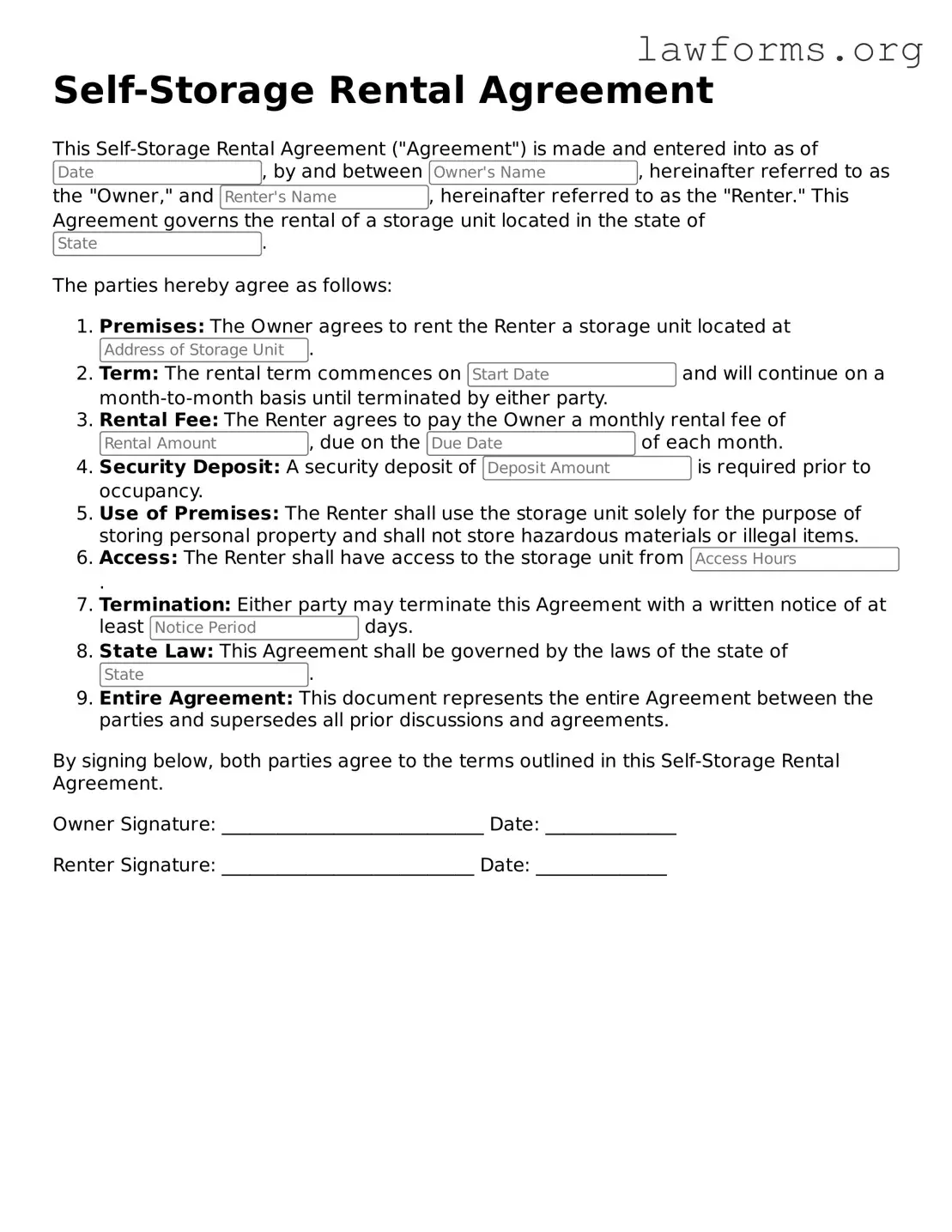Valid Self-Storage Rental Agreement Form
The Self-Storage Rental Agreement form is a crucial document that outlines the terms and conditions between a storage facility and a renter. This agreement protects both parties by detailing responsibilities, payment terms, and usage guidelines. If you're ready to secure your storage space, fill out the form by clicking the button below.
Customize Document Online
